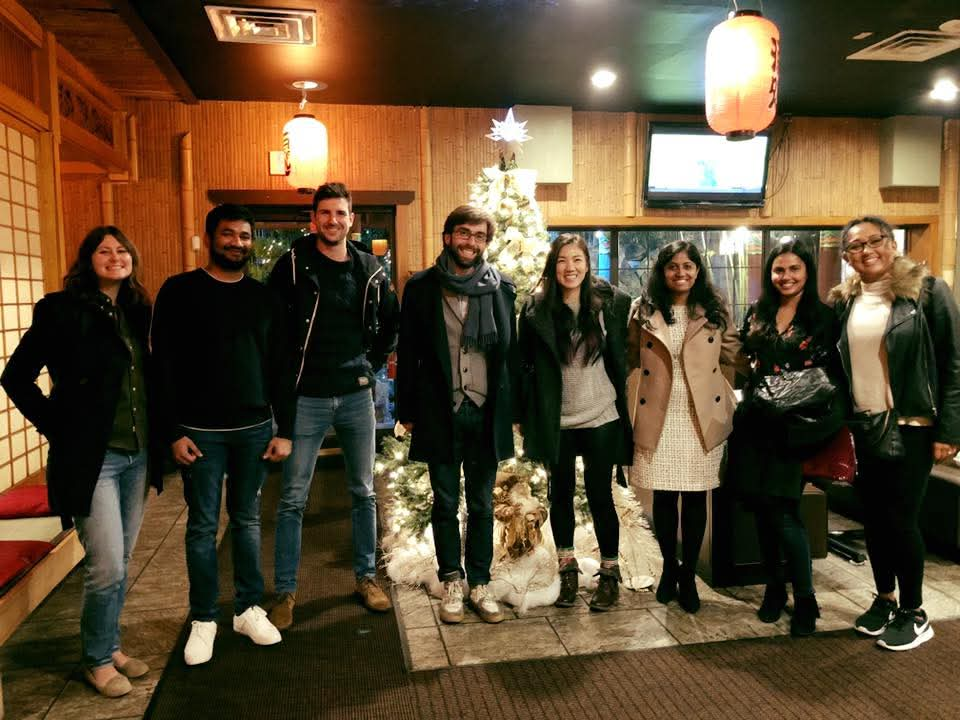We caught up with the brilliant and insightful Swara Dave a few weeks ago and have shared our conversation below.
Swara, appreciate you joining us today. Innovation comes in all shapes, sizes and across all industries, so we’d love to hear about something you’ve done that you feel was particularly innovative.
One of the most innovative contributions I have made in my career has been advancing the deployment of Open Radio Access Networks (Open RAN) and Citizens Broadband Radio Service (CBRS)-based 5G networks at Charter Communications. I was directly involved in implementing cloud-native, containerized RAN systems and provisioning nearly 1,700 strand-mounted radios with 97% system accuracy, using the Airspan Control Platform and dynamic spectrum coordination through the Spectrum Access System (SAS). What made this really exciting was the way it combined spectrum-sharing innovation with Open RAN’s multi-vendor, disaggregated architecture. By doing so, we reduced reliance on traditional carriers, cut costs, and built a flexible, secure, and scalable 5G network. It was rewarding to see how our work aligned with a broader industry shift and helped position U.S. networks to be more competitive, more inclusive, and more secure for the future.
At the same time, I have also worked on innovation at the foundational level of internet infrastructure. Earlier in my career at Sagemcom, I implemented and validated Mapping of Address and Port with Translation (MAP-T), a novel IPv6 transition technology that helped tackle the global challenge of IPv4 exhaustion and enabled millions of customer-premises devices to seamlessly adopt IPv6. We saw measurable improvements, including a 20% increase in network efficiency and a 30% reduction in IPv4 management costs across Wi-Fi routers, smart home gateways, and IoT systems. What made this meaningful for me is that it not only solved immediate problems but also laid the groundwork for long-term internet scalability in line with U.S. federal priorities for IPv6 adoption.
Looking back, what I find most rewarding is that my innovations span both disruptive and foundational levels. On one hand, I have helped reshape how 5G networks are deployed and managed through Open RAN and spectrum-sharing. On the other, I have helped modernize the very protocols the internet runs on with IPv6 transition technologies. Together, these contributions reflect my commitment to ensuring that U.S. communications infrastructure remains scalable, secure, and globally competitive.

Swara, love having you share your insights with us. Before we ask you more questions, maybe you can take a moment to introduce yourself to our readers who might have missed our earlier conversations?
For folks who may not have read about me before, I would describe myself as a telecommunications and network engineering professional with over seven years of experience shaping the future of wireless and internet infrastructure in the United States.
My journey into this field started with a deep fascination for how communication systems connect people. During my graduate studies in Telecommunications and Network Engineering at Southern Methodist University in Dallas, I developed a passion for solving complex networking challenges. That curiosity led me into roles where I could directly influence how networks perform at scale, from validating IPv6 transition technologies that modernize the internet itself, to deploying next-generation 5G and Open RAN systems that transform how we experience connectivity in our daily lives.
Over the course of my career, I have had the opportunity to work on projects that sit at the intersection of innovation, scalability, and national impact. For example, at Charter Communications, I contributed to the deployment of Open Radio Access Networks (Open RAN) and Citizens Broadband Radio Service (CBRS)-based 5G infrastructure. I provisioned and validated nearly 1,700 strand-mounted radios with 97% accuracy using the Airspan Control Platform and the Spectrum Access System. This work was groundbreaking because it combined cloud-native, disaggregated architecture with spectrum-sharing innovation, reducing reliance on traditional carriers, lowering costs, and enabling a flexible, secure, and scalable 5G network. Knowing that my work helped position U.S. networks to be more competitive, more inclusive, and more secure is something I take great pride in.
In addition, I led the deployment and optimization of more than 2,100 Cisco and Ruckus Wi-Fi access points nationwide, expanding reliable connectivity for small and medium businesses and supporting broader digital inclusion. This project underscored the practical side of my work, helping local businesses thrive in a digital-first economy while extending high-quality connectivity to more communities.
At the foundational level of internet infrastructure, I also contributed to IPv6 innovation. While at Sagemcom, I implemented and validated MAP-T (Mapping of Address and Port with Translation), a novel IPv6 transition technology that helped tackle the global challenge of IPv4 exhaustion and enabled millions of customer-premises devices such as Wi-Fi routers, smart home gateways, and IoT systems to seamlessly adopt IPv6. My work improved network efficiency by 20% and reduced IPv4 management costs by 30%, laying the groundwork for long-term internet scalability in line with U.S. federal priorities for IPv6 adoption.
Earlier in my career at Mitel, I worked as a Tier 3 Network Support Engineer where I supported VoIP and SIP-based communication systems for enterprise and government clients, including emergency 911 services (E911) for hospitals, universities, and law enforcement. This experience was especially meaningful because it allowed me to contribute to public safety and emergency communication infrastructure, ensuring mission-critical services were reliable during times when they mattered most.
What sets me apart is my ability to work across both foundational internet technologies and cutting-edge wireless systems. On one hand, I have strengthened the protocols and architectures that make the internet scalable and sustainable. On the other, I have driven disruptive changes in how wireless networks are built, deployed, and operated. This dual perspective allows me to approach problems holistically: I don’t just look at immediate deployment challenges, but also at long-term scalability, security, and national competitiveness.
At the core, what I want people to know about my work is that it’s not just about technology, it’s about impact. Whether it’s ensuring small businesses have reliable connectivity, enabling 5G innovations that reduce operational costs, supporting public safety networks, or laying the groundwork for secure, IPv6-based infrastructure, I focus on solutions that matter for people, organizations, and society at large.
I am most proud that my contributions help bridge gaps in digital access, strengthen the security and resilience of U.S. networks, and support the broader vision of a more connected, future-ready world. For anyone following my journey, I want them to know that my work is dedicated to advancing secure, scalable, and inclusive communications infrastructure, a mission that I believe is essential for both economic growth and societal progress.

We’d love to hear a story of resilience from your journey.
If I had to share a story that illustrates my resilience, I would go back to my time at Mitel, where I supported VoIP and emergency 911 (E911) communication systems. These were mission-critical networks used by hospitals, universities, and law enforcement. The nature of the work meant that failures weren’t just technical glitches, they could impact public safety. I still remember facing incidents where entire services were disrupted, and there was enormous pressure to resolve the issue quickly. As a Tier 3 engineer, I was the one expected to step in when no one else had the answer.
What made those moments defining was not just the technical challenge but the responsibility of knowing that lives could depend on the system being restored. There were times when fixes required nights of painstaking log analysis, simulations, and collaboration with multiple vendors, often under strict time constraints. It was exhausting, but I refused to let setbacks or complexity discourage me. Each time, I focused on breaking the problem down, communicating clearly with stakeholders, and pushing until a resolution was found.
That resilience, staying calm under pressure, pushing through long hours, and refusing to give up when the stakes were high, stayed with me as I moved forward in my career. It helped me later when I worked on innovations like deploying Open RAN and CBRS-based 5G networks or integrating MAP-T for IPv6 transition, both of which came with their own unique obstacles and required persistence to validate new technologies and prove their scalability.
Looking back, those early experiences at Mitel taught me that resilience is not about avoiding challenges, it’s about meeting them head-on, maintaining focus under pressure, and finding solutions that matter. It’s a mindset that continues to shape how I approach every project today.

How about pivoting – can you share the story of a time you’ve had to pivot?
A time I really had to pivot in my career was when I transitioned from working on enterprise VoIP systems at Mitel to focusing on large-scale network validation and IPv6 transition at Sagemcom.
At Mitel, my work was deeply tied to VoIP and emergency 911 (E911) services. The problems I solved were often about ensuring reliability, troubleshooting SIP and call routing, and supporting mission-critical communications for hospitals, universities, and law enforcement. It was high-pressure, service-driven work where success meant that people could make life-saving calls without interruption.
But when I moved to Sagemcom, the world looked completely different. Suddenly, I wasn’t just ensuring continuity of services, I was helping future-proof the internet itself. The focus shifted from troubleshooting to validating IPv6 transition technologies like MAP-T, making sure millions of devices such as Wi-Fi routers, smart home gateways, and IoT systems could work seamlessly as the industry moved away from IPv4. It was a pivot from reactive problem-solving to proactive innovation, and it required me to learn new tools, frameworks, and a very different mindset.
The backstory here is that I didn’t plan this shift, it was driven by the reality of where technology was heading. I could have stayed in a safe lane, working in VoIP operations, but I knew that the future of networking was in IPv6, 5G, and cloud-native systems. That pivot wasn’t easy, it meant unlearning habits, building new skills, and pushing myself into uncharted areas of wireless and broadband. But looking back, it was one of the best decisions I made. It set me on a path that eventually led to contributing to Open RAN and CBRS-based 5G deployments at Charter Communications, where innovation and scalability became the center of my work.
For me, that pivot taught an important lesson: sometimes your career growth requires letting go of what you’ve mastered and stepping into spaces that challenge you to rebuild yourself as an engineer.
Contact Info:
- Linkedin: https://www.linkedin.com/in/swaradave




